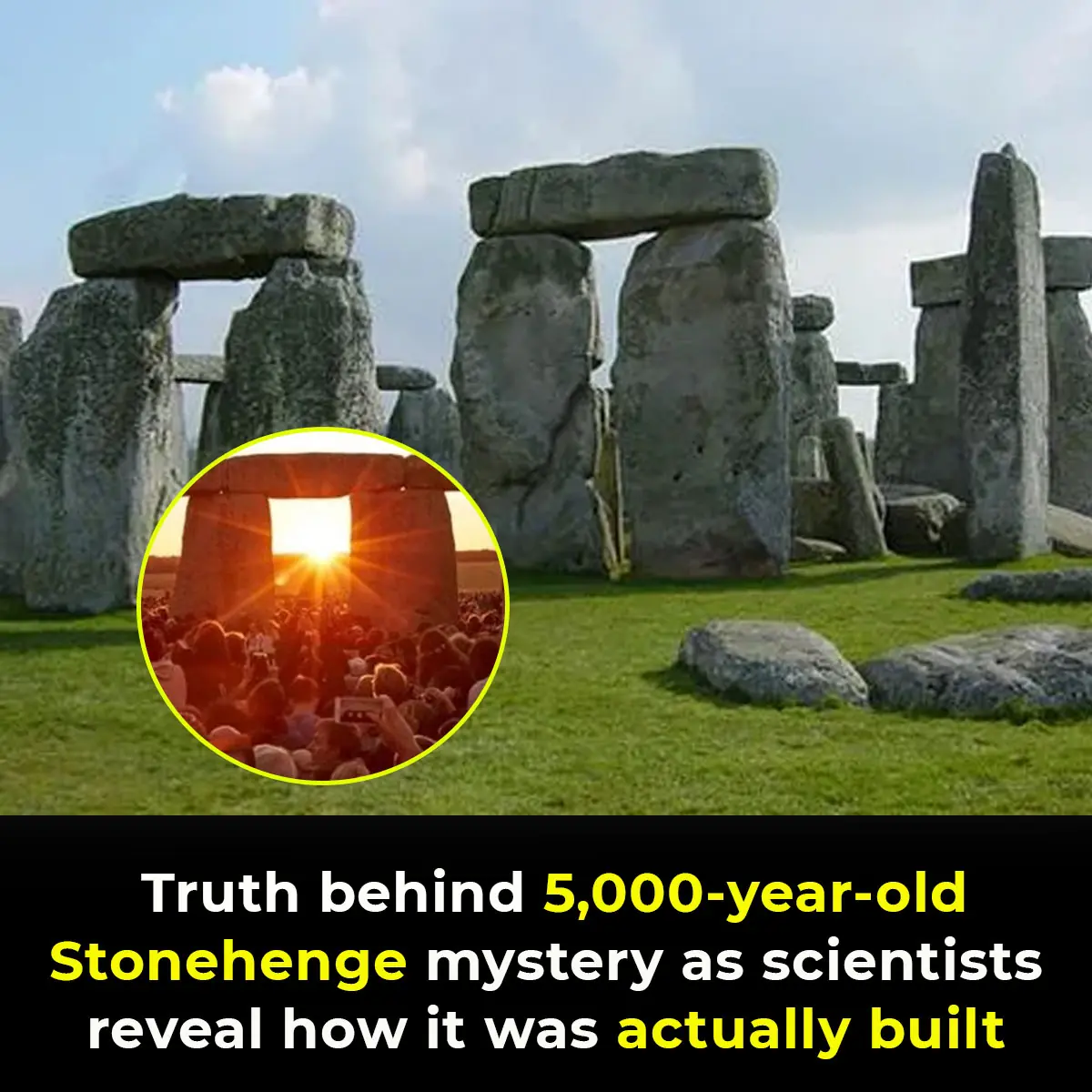
Truth behind 5,000-year-old Stonehenge mystery as scientists reveal how it was actually built

A new study published in the Journal of Archaeological Science offers fresh insight into a longstanding mystery surrounding Stonehenge.
Located on Salisbury Plain in Wiltshire, this iconic prehistoric structure includes a perplexing rock known as the "Newall boulder." For years, scientists have debated whether this boulder was transported to Stonehenge by Welsh glaciers or by human hands over 5,000 years ago.
Professor Richard Bevins and his team at Aberystwyth University recently compared the Newall boulder with samples from a rocky outcrop at Craig Rhos–y–Felin in Wales. Using advanced microscopic and geochemical techniques, they found "no evidence to support the idea that it is a glacial erratic."
Instead, the stone matched the characteristics of rocks from Craig Rhos–y–Felin, indicating that it was likely carried over 125 miles by humans to Wiltshire. Chemical analysis revealed that the boulder and other fragments from Stonehenge share identical amounts of thorium and zirconium, aligning with the geology of Craig Rhos–y–Felin.
The researchers noted that the boulder is a foliated rhyolite, with a surface layer rich in calcium carbonate, further supporting the hypothesis that humans transported it. Glaciers, they argued, would have distributed similar stones across the region, making it unlikely that the boulder was a product of glacial movement.
Another stone at the site, Stone 32d, was also studied. Previously thought to be a spotted dolerite, it was found to be a foliated rhyolite, just like the Newall boulder.
"Part of the fascination of Stonehenge is that many of its megaliths, in contrast to the larger, more locally sourced sarsens, can be traced back to Wales, over 200 kilometers away," the research team explained.
"Most archaeologists agree that Neolithic people managed this impressive feat of transporting stones weighing up to 3.5 tonnes. However, there is an opposing view, which suggests that no human effort was involved. This theory argues that the Welsh stones were carried by glacial ice long before Stonehenge was constructed." One of the strongest proponents of the glacier theory is Dr. Brian John.
Dr. John had previously argued that the boulder was reduced in size and significantly altered during glacial transport, possibly sitting on the bed of a glacier for much of the journey before being deposited on or near Salisbury Plain. However, the new research suggests these features might be the result of weathering rather than glacial activity.
The researchers stated that presenting Dr. John’s theory as fact, rather than a hypothesis, is misleading. "The presence of Stonehenge itself is evidence that Neolithic people moved stones weighing up to 40 tonnes. Unless one argues that the stones were simply lying on the ground ready to be set up, it is clear that the stones must have been moved into place."
"If Neolithic people were capable of moving stones a few tens of meters, they could certainly move them hundreds of kilometers," the study concluded. "Though it may not have been easy, it was entirely feasible, and moving 2–3 tonne bluestones would require far less effort than moving the sarsens."
While the exact methods of transport remain unknown, the study points out that recent indigenous peoples have successfully moved large stones across great distances using ropes, wooden sledges, and trackways—technologies that would have been available to Neolithic people.
News in the same category


Trump is Looking to Change Marijuana Laws in the Us and It Could Have a Major Impact

Decode the secrets behind human fingerprints.

Ch!lling simulation shows what actually happens to your body when you d!e

Scientists issue warning for surprising item people use that's 40 times dirtier than a toilet seat

Scientists reveal what your favorite way to eat eggs really says about you

New report reveals exactly which professions are most at risk from AI takeover in the next five years

12 Small Habits That Could Be Ruining Your Home

Are Brown Recluse Bites Really That Dangerous? Here’s What You Should Know

Blue Stop Signs: What Do They Mean?

16 Subtle Clues Your Partner May Not Be Loving You as You Deserve

15 Phrases You Should Never Tell a Man to Avoid Tension

The UK Has Created a Robot Fish That Eats Ocean Plastic and Powers Itself by Digesting It, Eliminating the Need for a Battery

MrBeast finally reveals his net worth after admitting how much is in his bank account live on stream

Influencer trapped in one of the most remote places on Earth faces brutal fine as legal fate is revealed

Texas announces major plan to fight flesh-eating flies as they prepare to descend on the US

The Volume Buttons on Your iPhone Have Countless Hidden Features
Your iPhone’s volume buttons may seem simple, but they’re packed with powerful, time-saving shortcuts. From snapping perfect photos without touching the screen to activating emergency calls in seconds, these “secret” tricks can make your iPhone ex

The reason dogs often chase and bark some people but not others
While dogs are often called “man’s best friend,” not every interaction starts with a wagging tail. Sometimes, a dog will bark, growl, or even run after a person — and the reasons go far deeper than simple playfulness.

Can You Find the Hidden Pipe? Only 2% Can!
News Post

Tibremciclib for Advanced Breast Cancer: Is It Worth It?

Pluvicto vs ARPI in Prostate Cancer: Is One Better?

Does Chest Pain Always Mean a Heart Attack?

10 Tasty Snacks Packed With Good-for-You Carbs

Pokeweed: The Attractive but Highly Toxic Plant Growing in Your Backyard

Goosegrass: Health Benefits and Uses

The Powerful Health Benefits of Lipton, Cloves, and Ginger Tea Every Woman Should Know

Drink this before bed to balance blood sugar & stop nighttime bathroom trips!

This vegetable oil linked to “aggressive” tumour growth, study finds

The Miracle Tree: 16 Health Benefits of Moringa & How to Use It

Clove Collagen Gel : Night Gel For A Smooth & Tight Skin

Transform your skin with fenugreek seeds

8 Natural Remedies to Cure Sinus Infections Without Antibiotics

Watch – Mexico City is Converting Highway Pillars Into Vertical Gardens to Clean the Air and Beautify the City

Trump is Looking to Change Marijuana Laws in the Us and It Could Have a Major Impact

The Best Hair Growth Vitamins and Supplements to Fight Hair Loss

Foods to Eat if You Need to Poop – The Best Natural Laxatives to Relieve Constipation

The 4 vitamins this 87-year-old woman takes to stay aging (and you can too)

6 Powerful Castor Oil Benefits for Your Health and Wellness
